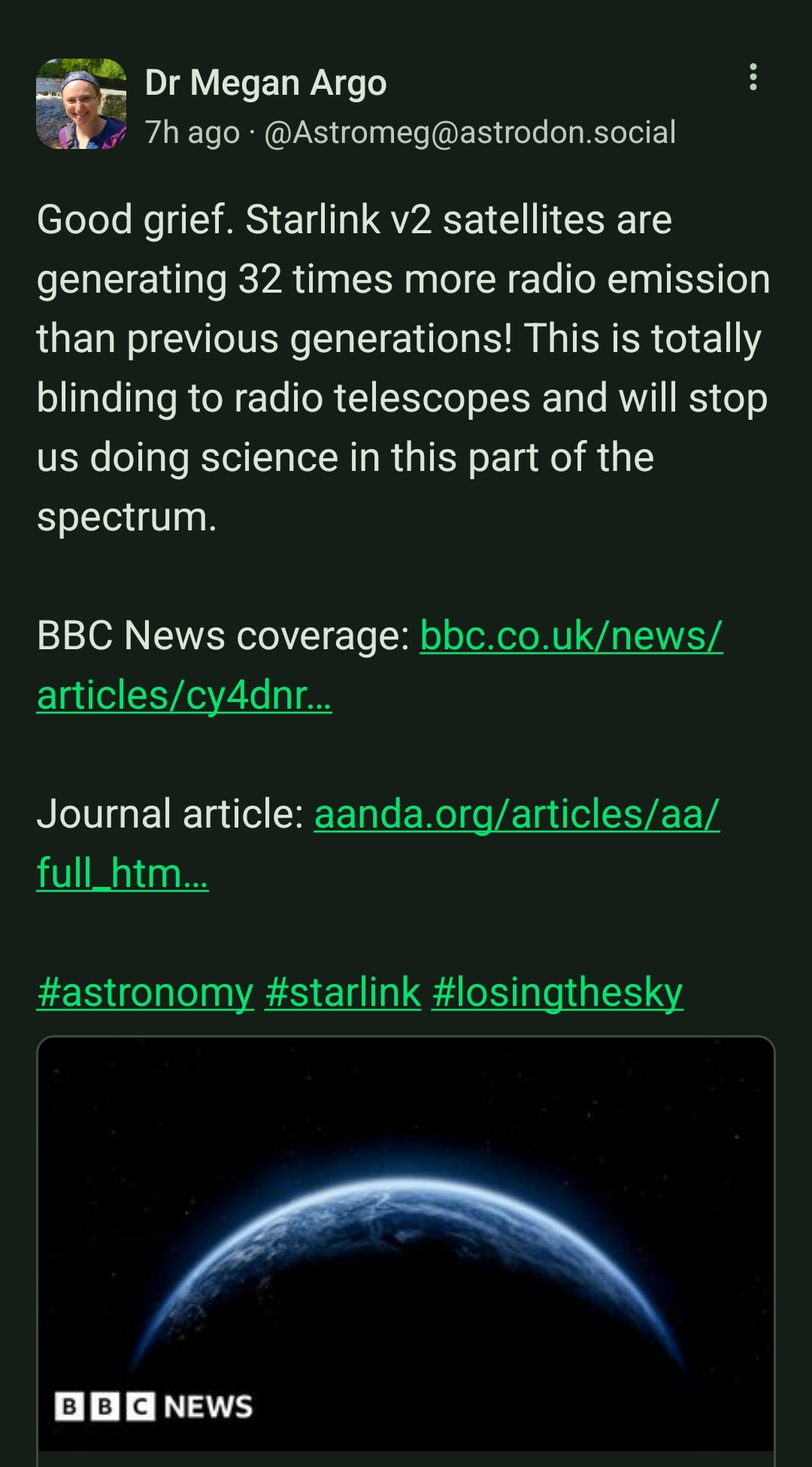this post was submitted on 18 Sep 2024
1219 points (97.4% liked)
Microblog Memes
6600 readers
2225 users here now
A place to share screenshots of Microblog posts, whether from Mastodon, tumblr, ~~Twitter~~ X, KBin, Threads or elsewhere.
Created as an evolution of White People Twitter and other tweet-capture subreddits.
Rules:
- Please put at least one word relevant to the post in the post title.
- Be nice.
- No advertising, brand promotion or guerilla marketing.
- Posters are encouraged to link to the toot or tweet etc in the description of posts.
Related communities:
founded 2 years ago
MODERATORS
you are viewing a single comment's thread
view the rest of the comments
view the rest of the comments

Just to add, radio telescopes easily have diameters of several 10 to several 100 meters, you won't put that easily in space. And even if you do, maybe one, not tens of them. And these are often used in network as well for interferometry to have higher spatial resolution, so that would be gone as well.
Why can't we use the satellites for interferometry, too?
We could, but it's way more expensive. There was a ~10m dish added to space VLBI, but the ground stations are several times larger, up to a few 100m. And you need dish size for sensitivity: in interferometry the largest distance between two telescopes gives the size of the synthetic instrument, but the size of the individual dishes fills up the detector.
Also, if something breaks it's almost impossible to fix in space.
A couple of satellites can make a larger telescope than we could ever build on earth, and you avoid the natural interference as well as the the interference from other satellites (star link isn’t the only source of interference…).
Yes, and we are already doing that, VLBI uses dozens of telescopes, each of them larger that we could sensibly launch to space
The vlbi has dozens of 20m dishes, they have satellites with 10m diameters and Orion is thought to have 100m diameter. We’ve launched larger into space already, and the VLBI has used space telescopes to increase its size already as well.
So to claim we can’t sensibly launch any, when we have them up there already is plain wrong.
Yes, I just wrote about that above. It's just the difference in cost between the two. How many large space observatories were there altogether? In the order of dozens maybe?